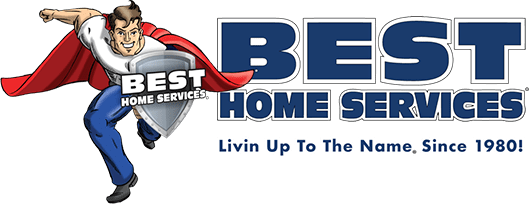Making Sense Of Thermostat And Humidistat Settings
When the humidity in South Florida rises, it can make living here very uncomfortable. Whether you’re a snowbird or a Florida resident, there is a good chance you have felt that sticky, wet feeling. Some of us have even felt it inside of our homes!
When our AC system stops working efficiently, or simply at all, it can make your home humid very quickly. But what about homes that lay dormant for six months out of the year? South Florida has a lot of part-time residents who frequently ask, “What should I set my thermostat/humidistat to when I leave for the summer?
It’s a great question! There are a lot of different opinions in the industry. The answer can vary from one company to another or even from one technician to another within the same company! So how do you know which is the right choice? Let Best Home Services spell it out for you.
Where Do I Set The Thermostat/Humidistat When I Leave Home?
According to the EPA (Environmental Protection Agency), it is recommended that Florida residents keep the indoor relative humidity below 60% relative humidity. Ideally, that percentage should be between 30% to 50%. Half of the year this would certainly be attainable, but during those hot, sticky summer months it is more likely your home will fall between 55%-58%. This is assuming your air conditioning is running on a properly sized system without a whole home dehumidifier, as these are normal circumstances.
Why Does Controlling The Humidity In My Home Matter?
When too much humidity is present, you start to develop an environment that welcomes the growth of unwanted microorganisms. When you control the humidity in your home by remaining with the 30 to 50 percent realm, you reduce your risk of home contamination.
There are certain breeding grounds for mold, mildew, bacteria, and insects. These include standing water, wet surfaces, and water-damaged materials. Dust mites also grow in warm, damp environments. These little creatures are the source of one of the strongest biological allergens around, which is why you want to keep them out.
Most field technicians come across mold, mildew, bacteria, and insects inside of your air conditioning systems because of the reasons we stated above. Unfortunately, because your system is in direct contact with the air you breathe, these unwanted contaminations get swept inside your home, and into the air, you breathe.
What Are The Humidity Guidelines?
Thermal Environmental Conditions for Human Occupancy sets guidelines intended to achieve thermal conditions that at least 80% of the occupants would find comfortable. ASHRAE, who is responsible for making the rules all AC contractors and AC engineers are obligated to follow, recommends humidity levels between 25-60%. This is stated in Standard 55-1992.
However, some older standards still have people recommending lower than 65%. The recommendations for about 50% RH (Relative Humidity) is likely related to the fact that dust mites dwelling within homes die if they are exposed to an RH of 50% or lower over the span of a few weeks.
Remember: Maintaining A Lower Humidity Costs Energy
The lower you keep the humidity within your home, the higher your electric bill will be. Keeping the relative humidity at 50 percent is not typically needed unless you have a dust mite problem. Keeping humidity levels too low (around 25% or 35% RH) may cause health complaints such as dry mucous membranes and also may increase static electricity that is not healthy for sensitive electronics, such as computers.
With all this said, people in South Florida need to also have a reliable way to monitor relative humidity inside their home. There are many outdated ways of trying to control the humidity as desired. However, they can be very confusing to some and even inaccurate in their regulation. If you have the old square box with the dial in the middle next to your thermostat, you are likely using one of them.
Best Home Services suggests getting a thermidistat. This more advanced, digital technology is both a thermostat and humidistat in one system. If you do not currently have this system, an outdated system, or any system to regulate humidity in your home, reach out to us! Our licensed and trained technicians can help you control the humidity in your home more accurately and efficiently.
